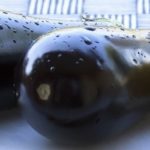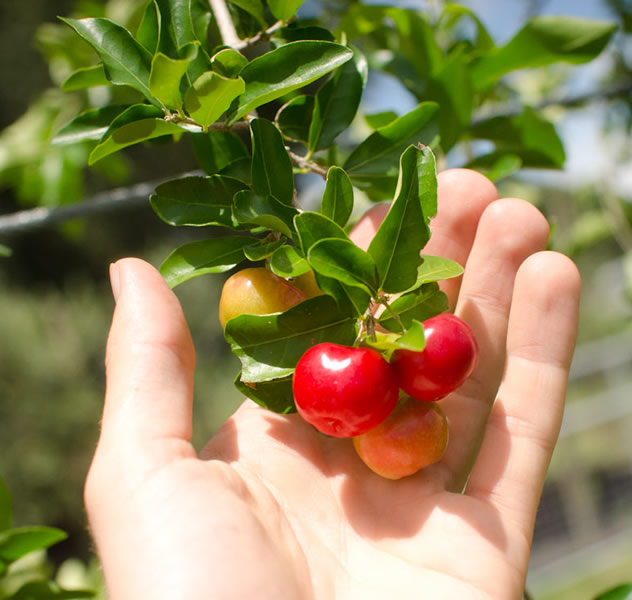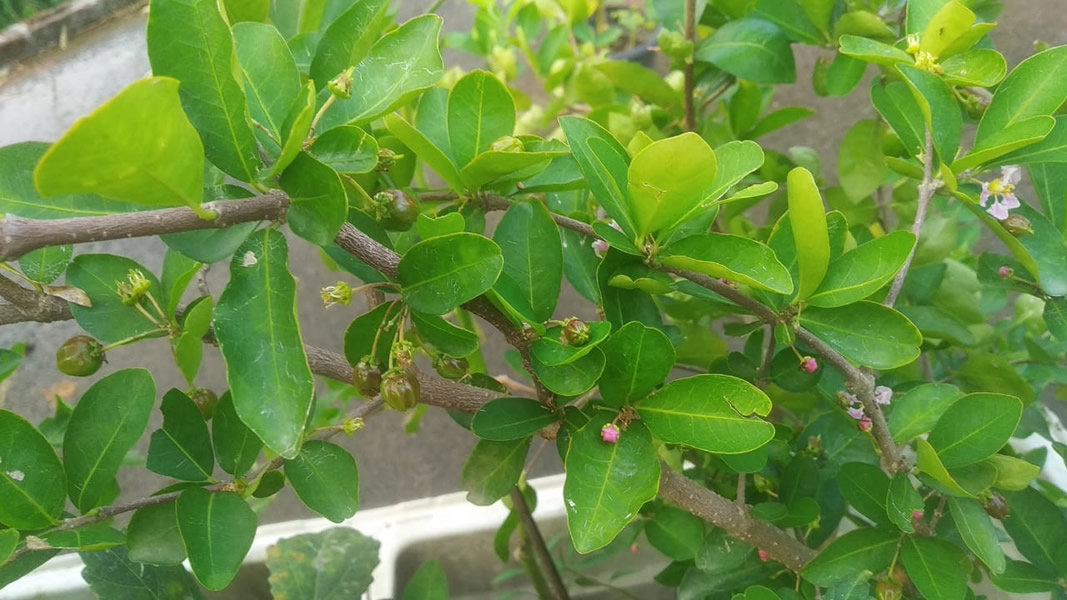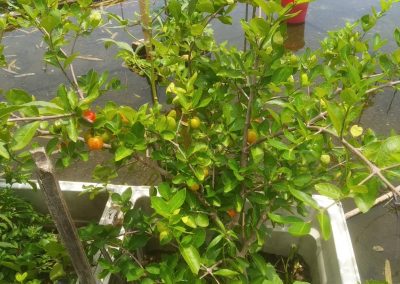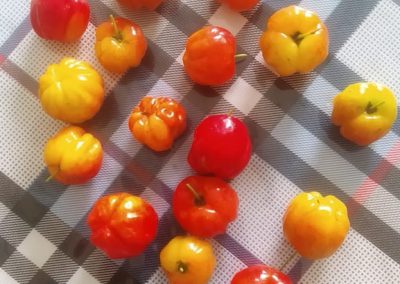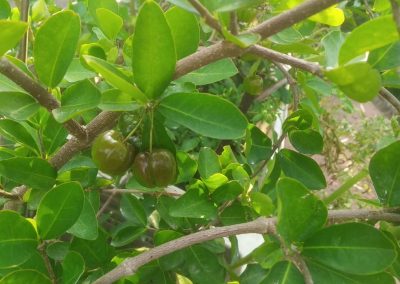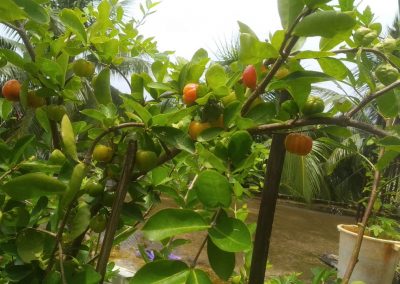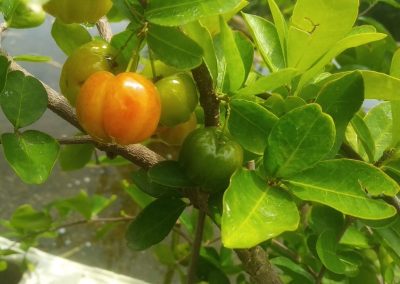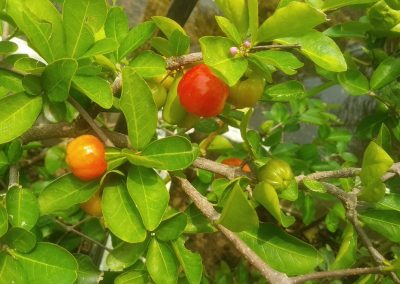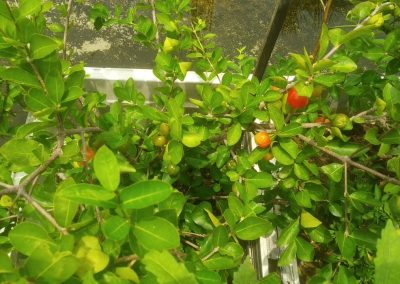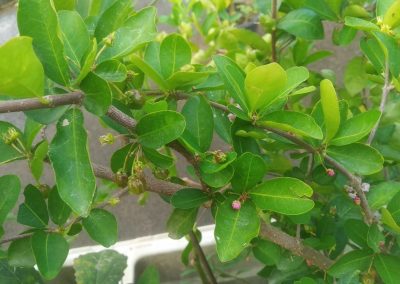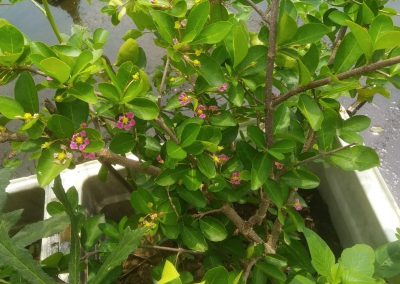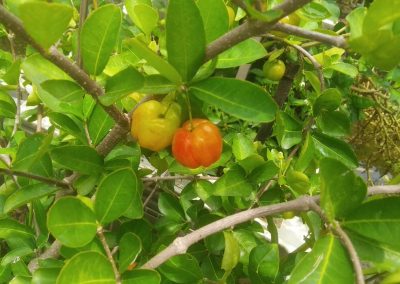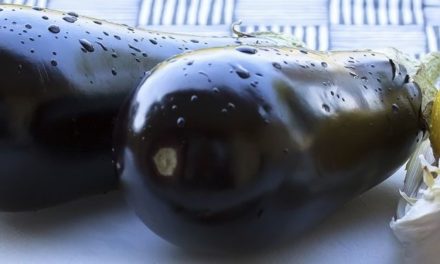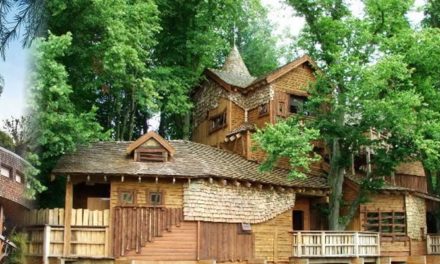
Barbados Cherry (Acerola) – Powerhouse of Vitamin C

My cousin recently duped by a Nursery, believing he was buying Cherry plant. After few days the fruit came and he shared the images with me and I was laughing. It was not cherry, but looks like cherry tomatoes with 3 big seeds. After searching for some time, not an easy search as this is very uncommon fruit, I found it is actually a cherry, but alas! It is Barbados Cherry or Acerola, scientific name Malpighia emarginata, a tropical fruit native to mostly South America.
Left: Ripe Barbados Cherry (Image source). Right: Flower and unripe Barbados cherry (Own Image)
Ripe Barbados Cherry (Image source).
What caught me off-guard is the amount of vitamin C it contains, which is only rivaled by couple of few other fruits. It contains 1,500+ mg per 100g of vitamin C whereas 100g of regular lemons and oranges have around 52mg vitamin C. For adults, the recommended daily amount for vitamin C is 65 to 90 milligrams (mg) a day, and the upper limit is 2,000 mg a day.
This is kind of big news to me, as the CoronaVirus pandemic is ravaging the world since the beginning of 2020, and with no known cure people are looking to strengthen their immunity by taking vitamins from natural sources or from pharmaceuticals.
Vitamin C Comparison and Daily Need
Vitamin C of Barbados Cherry (Acerola)
1,677.6mg/100g

Daily recommended Vitamin C for well being:
65mg to 90mg
Upper limit is 2000mg/day.
Amla: 600mg/100mg
Guava: 228mg/100g
Bell Pepper (Not green): 128mg/100mg
Kiwifruit: 92.7mg/100g
Broccoli: 89.2mg/100g
Papaya: 61mg/100g
Orange and Lemon: 53mg/100g
Pineapple: 47.8mg/100g
Lime (Green lemons): 29mg/100mg
The plant and climate
This small tree can grow upto 6m (20ft) and a tropical plant native to South America. It also grows well in sub-tropical areas of Asia, like India and Bangladesh.
“Acerola can be propagated by seed, cutting, or other methods. It prefers dry, sandy soil and full sun, and cannot endure temperatures lower than 30 °F/-1 °C. Because of its shallow roots, it has very low tolerance to winds.” – Wikipedia
Used for
“The fruit is edible and widely consumed in the species’ native area, and is cultivated elsewhere for its high vitamin C content. About 1677 mg of vitamin C are in 100 g of fruit. The fruit can be used to make juices and pulps, vitamin C concentrate, and baby food, among other things.
A comparative analysis of antioxidant potency among a variety of frozen juice pulps was carried out, including the acerola fruit. Among the 11 fruit pulps tested, acerola was the highest-scoring fruit, meaning it had the most antioxidant potency, with a Trolox equivalent antioxidant capacity score of 53.2 mg.” – Wikipedia.
Photo Gallery: Barbados Cherry (Acerola)












